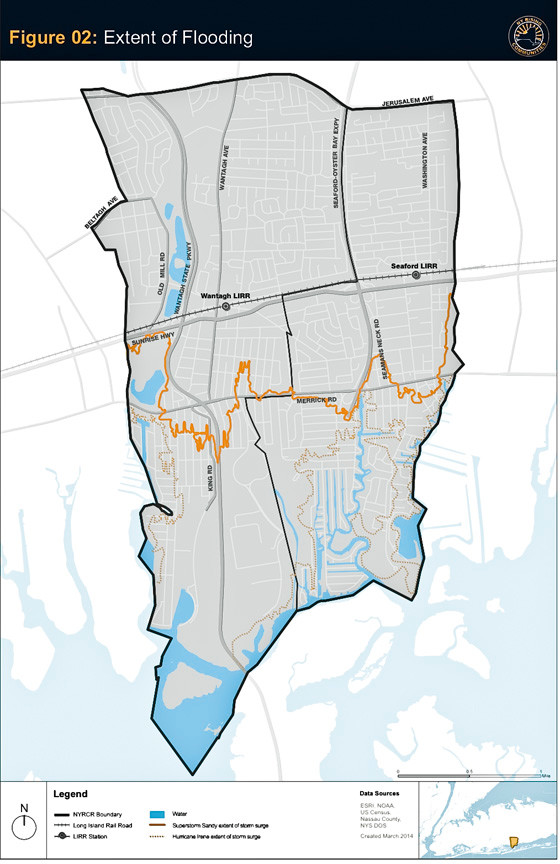Resiliency projects should begin in 2015
Two years ago, the recovery from Hurricane Sandy was in its earliest stages. Families were taking stock of their flood-damaged homes. Power was slowly being restored. Downed trees were being cleared.
Out of the devastation rose New York Rising and its Community Reconstruction Program. Areas across the state, including the South Shore, were awarded funding by the U.S. Department of Housing and Urban Development for various resiliency projects. The Seaford-Wantagh zone received $11.2 million.
A local committee was established to devise projects that would best protect the two communities going forward, chaired by Ken Jacobsen, representing Seaford, and John Molloy, of Wantagh. Committee members and experts from New York Rising and other agencies developed a list of projects that they hope to begin work on in 2015.
Many houses in the Harbor area of Seaford and the Mandalay area of Wantagh were impacted by the storm surge from Sandy, and some families still aren’t back in their homes. Several homeowners have taken their own steps to protect their homes by raising them above the flood elevation.
Protecting the community as a whole requires several steps. The committee has recommended spending about $2 million of the allocation to inspect more than 140 outfall pipes along the Seaford and Wantagh coastlines, and install tidal check valves where necessary.
Another $2 million would be spent to inspect bulkheads at street and canal ends on roads maintained by the Town of Hempstead. Bulkheads that are damaged would be repaired, and others would be raised to ensure that water is held back. Materials resistant to wind and erosion would be used.
Storm water management would be evaluated along Sunrise Highway, Merrick Road and Park Avenue, with improvements made where necessary, including the possible creation of green infrastructure. This would cost about $1.2 million.
Wantagh High School is designated as an emergency storm shelter, and funding would be directed to making sure the building could accommodate the needs of the community, with the addition of such things as a backup generator.

 50.0°,
Overcast
50.0°,
Overcast 




